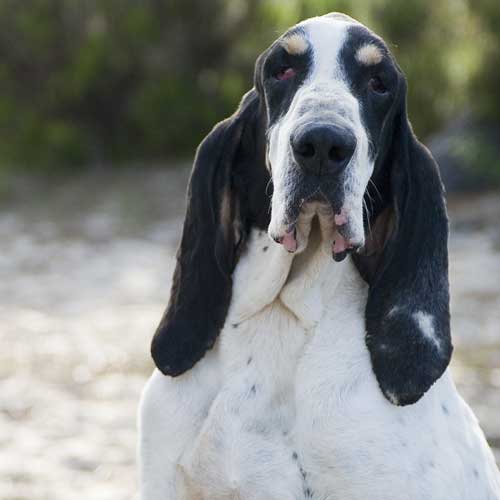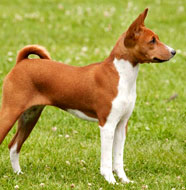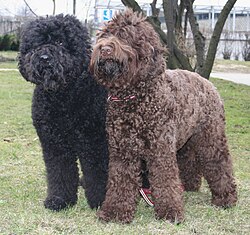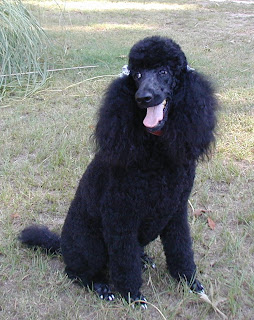 |
| Gascon Saintongeois |
 |
| Gascon Saintongeois |
 |
| Gascon Saintongeois |
 |
| Gascon Saintongeois |
The Gascon Saintongeois (FCI No.21) is a breed of dog of the scenthound type, recognised in two sizes, Grand (large) and Petite (smaller than the Grand, but not a small dog.) Originating in France, the breed is used for hunting in packs and descends from the old Hound of Saintonge type of large hunting dog.
The breed is a very typical French hound, with a lean and muscular body, long legs, long drop ears and pendulous flews (lips). Size for the Grand is 65 to 72 cm (25.6 to 28.3 ins) at the withers, females at total 24 to 26 inches; size for the Petite is 56 to 62 cm (22 to 24.4 ins) at the withers, making it still a fairly large dog; females are slightly smaller. Grands weigh 66 to 71 pounds.The eyes are dark chestnut. It has an elongated head. Its black nose is well-developed, and the lips are pendent. It has a deep chest, and a strong back. The tail is elegant and saber.
The colour of the coat is white with black patches, sometimes speckled or ticked with black. Ears and face around the eyes is black and the cheeks are tan, but there should not be a tricolour appearance. Two tan markings are above the eyes, and sometimes a tan marking is found on the base of the upper thigh, which is called the 'roe buck mark'. Faults, which indicate the dog should not be bred, include lack of substance, weak back, deviated tail, cow hocked, or legs that are too angulated or straight, which would impede running ability, as well as being off-colour or overly aggressive or overly shy.

























